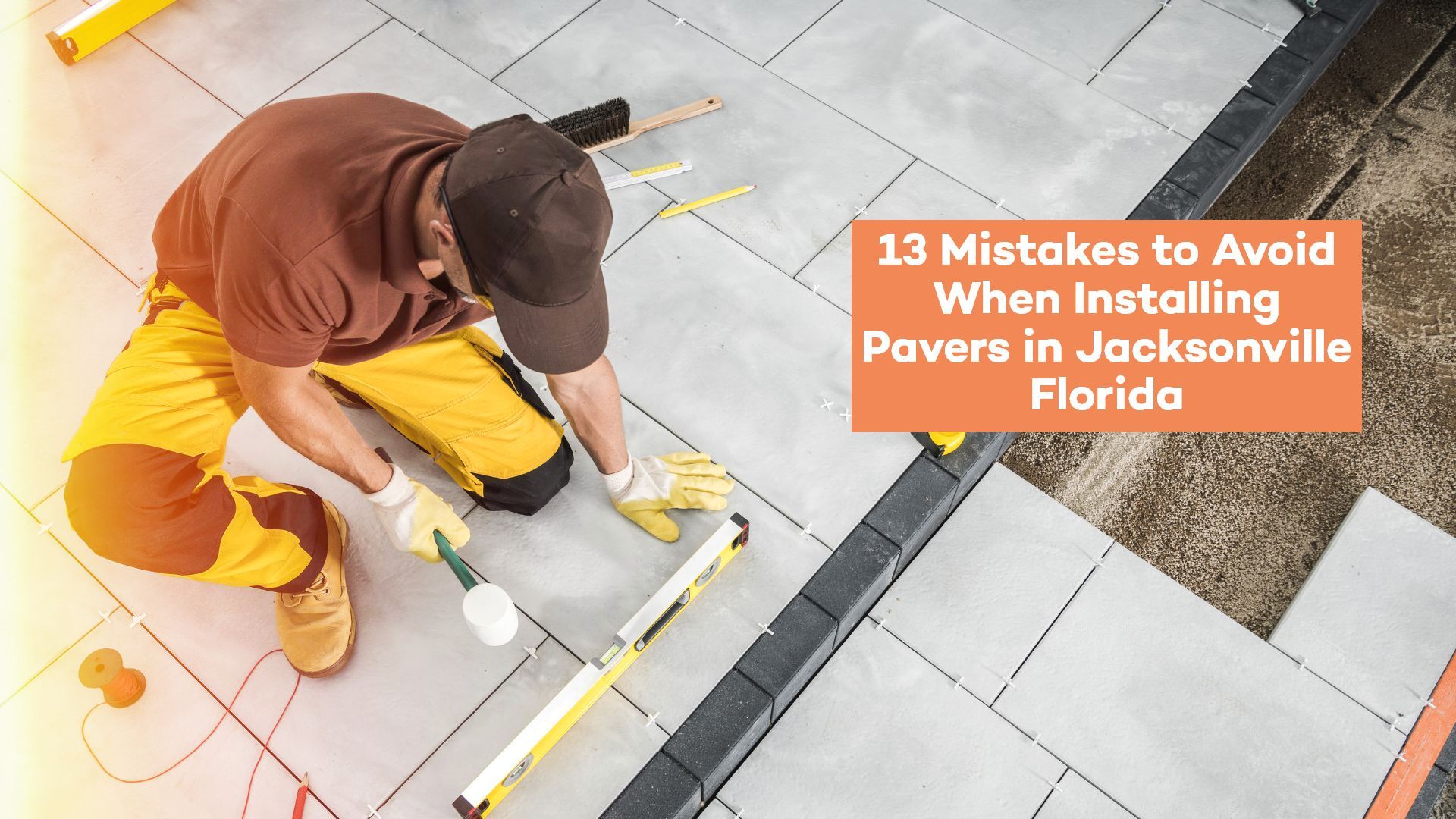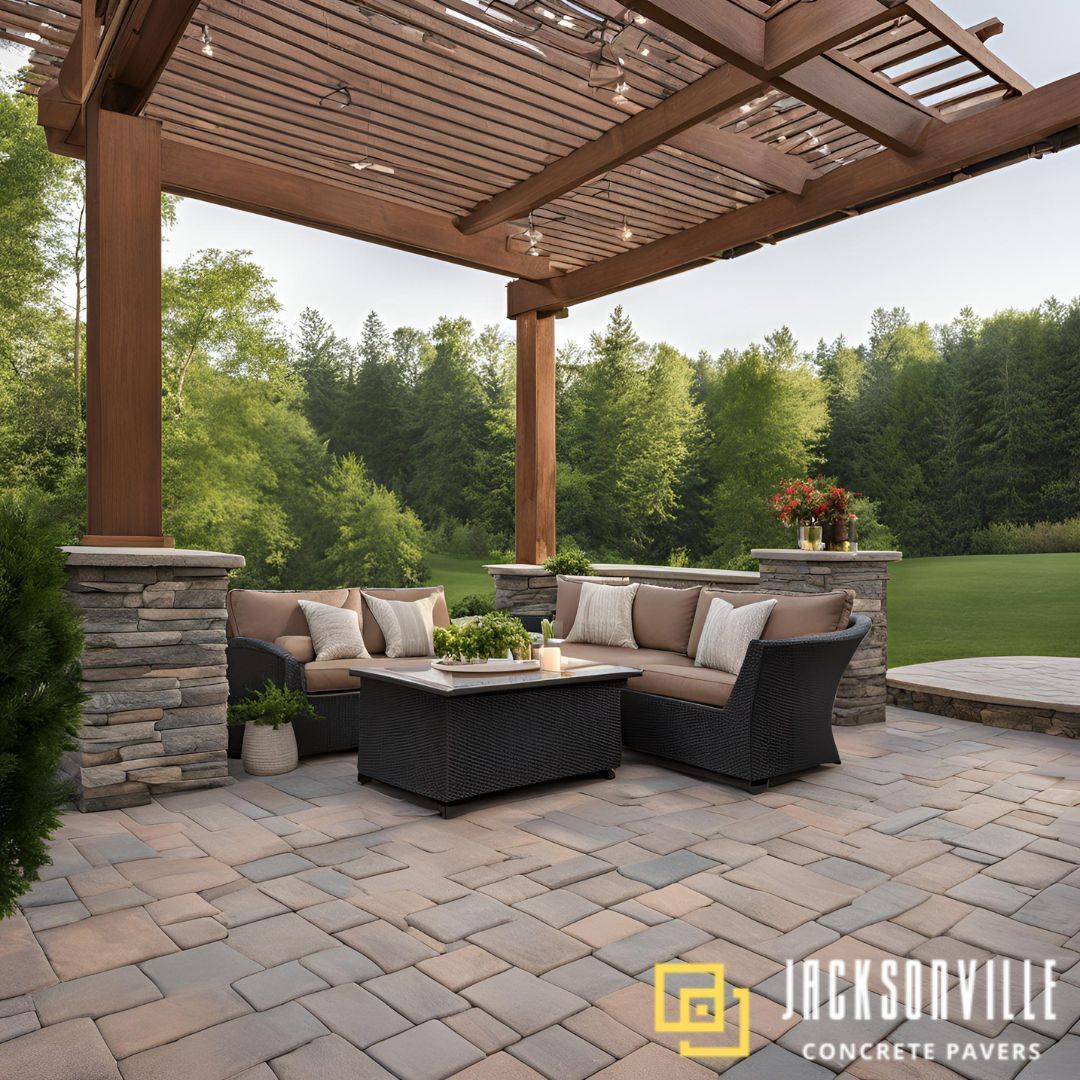13 Common Mistakes to Avoid When Installing Driveway Pavers
Expert Tips from
Jacksonville Concrete Pavers for a Flawless Driveway Paver Installation: Avoid These 13 Common Mistakes
Installing driveway pavers is a great way to improve the curb appeal of your home and add value to your property. Pavers come in a variety of colors, shapes, and sizes, making them ideal for creating one-of-a-kind designs that reflect your personality. Installing driveway pavers, on the other hand, necessitates careful planning and execution, as well as patience and attention to detail, to ensure a long-lasting, stable, and safe driveway.
While pavers have many advantages, they can be difficult to install, and homeowners frequently make mistakes during the installation process, leading to an unsightly and uneven driveway.
This article will go over the most common mistakes that people make when installing driveway pavers, as well as how to avoid them.
Failure to Plan the Design
It is critical to plan the design before beginning any driveway paver installation project. Take into account the size and shape of your driveway, the slope of the land, and any obstacles in your path. Failure to plan the design may result in incorrect paver placement, resulting in an unattractive and potentially dangerous driveway.
Drainage issues
Proper drainage is imperative in areas with heavy rainfall to prevent water from pooling on the surface. Water accumulation can damage the pavers and the foundation, resulting in expensive repairs. Make sure your driveway has adequate drainage and that the pavers slope away from your house. You can achieve this by installing a gravel base, using a slope, or using drainage systems.
Insufficient Base Preparation
This includes poor site preparation, insufficient grading, and a lack of base material. The ground must be properly prepared in order for your driveway pavers to be stable and durable. The base must be level, firm, and thick enough to support the weight of the vehicles. Sinking, shifting, and uneven pavers can be the result of improper base preparation.
Furthermore, to ensure a long-lasting driveway, the base material must be properly compacted. Failure to do so may result in a bumpy surface, which may result in paver displacement and an unsafe driveway. It is also essential to remove any existing grass, rocks, or debris before installing the pavers.
Using the Wrong Base Material
The quality and suitable base materials are important for a driveway's stability and durability. Some people use sand or gravel as a base material, which can shift and cause jagged pavers, as a shaky or insufficient foundation can cause pavers to divert and settle over time.
Depending on the soil conditions, it should be at least 4-6 inches deep. Crushed stone or gravel should be used as a base material for proper stability.
Improper Installation Patterns
Driveway paver installation necessitates careful planning and the application of the proper installation patterns. Some homeowners install the pavers randomly, resulting in a hideous driveway. You must select the right pattern and design that complements your home's style and meets your aesthetic goals, as improper alignment can cause tripping hazards. For driveways, the herringbone and running bond patterns are popular.
Proper Alignment
String lines are an effective way to ensure appropriate paver alignment. This entails running strings across the site to mark the driveway's edges and guide the installation. The spacing between pavers is also critical for proper alignment. The recommended paver spacing varies according to the type and size of the pavers, but it should be consistent throughout the installation.
Inadequate Paver Edging Installation or Restraints
Edging is a significant part of installing driveway pavers that should not be neglected. Edge restraints keep pavers in place and keep them from deviating or spreading.
You must use edge restraints that are strong and long-lasting, such as plastic, metal, and concrete. Selecting the correct type for the application and ensuring proper installation is necessary.
Using the Incorrect Pavers
One of the most common mistakes made by homeowners is selecting the incorrect type of pavers for their driveway, which can result in cracking, shifting, and discoloration. On the contrary, selecting the right paver material that can withstand vehicle weight is paramount. Concrete pavers, cement pavers, brick pavers, clay pavers, and natural paver stones are among the many options. Each type has distinct characteristics and is best suited for specific applications.
Make sure the pavers are suitable for your climate and the intended use of your driveway. Before making a choice, consider each type of paver's durability, cost, and maintenance requirements.
Failure to maintain proper joint sand & expansion joints
Expansion joints allow pavers to expand and contract without cracking or shifting. To fill the gaps between the pavers, joint sand is used. Using the incorrect type of joint sand or not using enough can lead to paver displacement, foundation damage, and an unstable driveway.
In large driveways, try including expansion joints at regular intervals.
Inefficient Compaction
Compaction of the base material and pavers is critical for a sturdy and long-lasting installation. Neglecting to compact properly can cause shifting, sinking, and breaking over time. To properly compile the base material as well as ensure adequate base material and paver compaction, compaction equipment such as plate compactors or rollers should be used several times throughout the installation process.
Failure to Consider Future Requirements
Installing pavers is a long-term investment, so it's vital to anticipate future needs and design your driveway to accommodate them. For example, if you intend to build a garage or an extension to your home, you must ensure that your driveway can support the extra weight.
Not Sealing the Driveway Correctly
Sealing the driveway helps protect the pavers from damage caused by weather, oil, or other substances. Failure to properly seal the driveway could lead to premature paver wear and tear.
No need for maintenance
Overlooking maintenance can result in a variety of problems, including weed growth, staining, and paver damage. The pavers must be cleaned regularly to avoid taints and plant growth. This can be accomplished with a pressure washer or a simple soap and water solution.
Sealing the pavers can also help prevent weather damage. To ensure maximum protection, this should be done every few years.
Ignoring to Employ Professional Paver Installers
Driveway paver installation can be an intricate process that necessitates knowledge and experience. Choosing the incorrect contractor can result in a poorly installed driveway. You are advised to conduct research and choose a reputable and skilled contractor. Request references and review their previous work to ensure they have the necessary skills and equipment to install pavers properlyinstall pavers properly.
Conclusion
Installing driveway pavers can be a rewarding project. Take your time and carefully follow the installation instructions, from preparing the base and selecting the right pavers to using the proper installation patterns.
By avoiding these common mistakes, following the proper installation process, and hiring a professional paver installation company, you can save time and money while ensuring a successful installation that will last for years.





